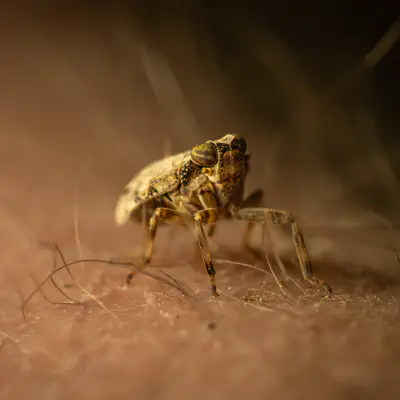Issid Planthoppers Lat. “Issidae“
Issidae is a family of planthoppers described by Spinola in 1839, belonging to the order Hemiptera, suborder Auchenorrhyncha superfamily Fulgoroidea.
Hierarchy
Distribution
Species of this family are present throughout the Northern Hemisphere.
Description
Issidae are small insects generally with a stocky body, as the wings mainly develop in width. Basic body coloration is not striking, usually shows brownish colors. The head has two ocelli. The forewings have strong pronounced ribs. They wrap the abdomen when the insect is at rest. The family originally included approximately 1000 species with 215 genera, but the systematics of Issidae remains uncertain, with many of the subfamilies having been recently removed to separate families, including Caliscelidae. Nogodinidae, and Tropiduchidae. In 2013, scientists described a biologically unique set of mechanical gears in an Issus nymph, though identical structures are known in most planthoppers, and were known for decades before the function of the gears was discovered
Taxonomy
The family Issidae was once large and included many groups which are now treated in other families or as families themselves. These groups include the Caliscelidae, Nogodinidae, and Tropiduchidae (e.g., subfamilies Tonginae and Trienopinae). Around 2003, there was a view in favour of a single subfamily Issinae, but the current consensus is placement in four (as below). The Catalogue of Life lists genera in five tribes Issini, Parahiraciini, Hemisphaeriini and Thioniini. The tribe Colpopterini have now been placed in family Nogodinidae Melichar, 1898 having been raised to a subfamily. The oldest fossil of the group is Cubicostissus of the Paleocene Menat Formation of France, belonging to the tribe Hysteropterini, molecular clock calibrations suggest a diversification during the Upper Cretaceous.
References
W. E. Holzinger, I. Kammerlander, H. Nickel: The Auchenorrhyncha of Central Europe - Die Zikaden Mitteleuropas. Volume 1: Fulgoromorpha, Cicadomorpha excl. Cicadellidae. - Brill, Leiden 2003 Stephen W. Wilson – Keys to the families of Fulgoromorpha with emphasis on planthoppers of potential importance in the Southern United States -Florida Entomologist 88(4) Fcla.edu
External links
Fauna Europaea Biolib
Ancestry Graph
Further Information
„Issid Planthoppers“ on wikipedia.org
„Issid Planthoppers“ on iNaturalist.org
Copyright

This article uses material from the Wikipedia article Issidae the free encyclopedia Wikipedia which is released under Creative Commons Attribution-ShareAlike 4.0 International License). On Wikipedia a list of authors is available.
This is not intended to be a dry lexicon. Personal stories and sensitive articles form the framework for our pictures: „A song in rustling leaves“
To help us understand his world, a eurasian running crab spider has composed a brief poem.


